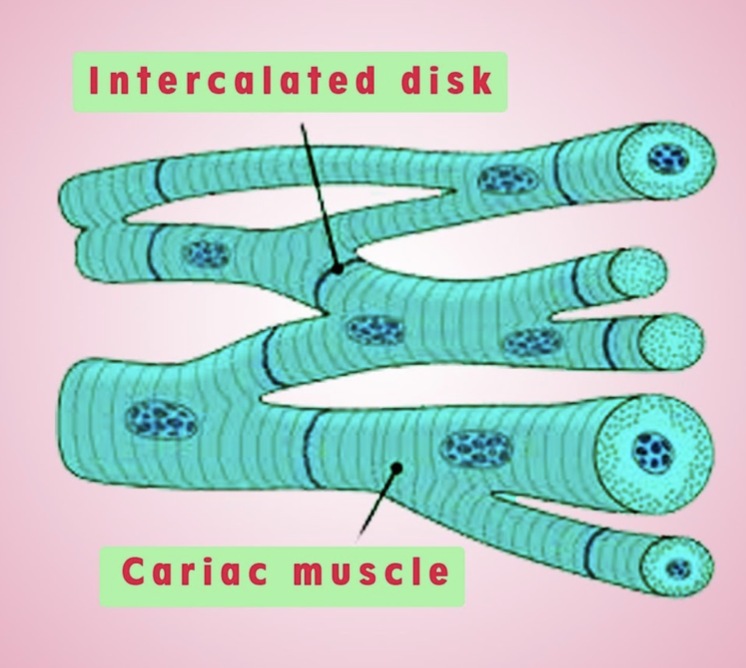
Pumping of the heart is regulated by _________ .
(a) Involuntary muscles
(b) Voluntary muscles
(c) Both voluntary and involuntary muscles
(d) Sometimes voluntary or involuntary muscles
Answer
556.2k+ views
Hint: The heart is the body's pumping organ that pumps blood to every part of the body. A type of muscle that is often referred to as white muscle or smooth muscle controls the pumping of the heart. It is autonomous and not dependent upon our consciousness.
Complete answer:
The human circulatory system consists of vessels in the heart and blood.
The heart is a complex muscle that pumps blood into the circulatory system's three divisions: coronary (the vessels that serve the heart), pulmonary (the heart and lungs), and systemic (the body's systems).
Cardiac muscles are involved in pumping and distributing blood through the heart to all tissues of the body. This process is carried out all the time in the body. It is not governed by the conscious will. These muscles are also called involuntary muscles.

Cardiac muscle tissue functions by involuntary movements to keep the heart beating. This is one characteristic that separates it from the tissue of the skeletal muscle, which you can regulate.
It does this by cells called pacemaker cells, which are specialized cells. These regulate the heart's contractions. Your nervous system sends pacemaker cell signals that cause them to either speed up your heart rate or slow it down.
Additional information: Involuntary muscles are muscles in the human body, also known as white muscles or smooth muscles, the contraction of which is regulated by the autonomic nervous system. Both muscles whose function is autonomous and not impacted by voluntary nerve activity are included in the involuntary muscles.
The muscles that are under conscious control and can be managed at will are voluntary muscles or we can choose when to use them. Since they are attached to the bones, they are also known as skeletal muscles. Voluntary muscles are responsible for the movement and locomotion of body parts.
So, the correct answer is, ‘(a) Involuntary muscles’.
Note: The heart pumps only 4 to 6 liters of blood each minute when a person is at rest. The heart may be expected to pump four to seven times this amount during extreme exercise. Intrinsic cardiac regulation of pumping in response to changes in the amount of blood flowing into the heart and control of the heart rate and strength of cardiac pumping by the autonomic nervous system is the basic means by which the amount pumped by the heart is controlled.
Complete answer:
The human circulatory system consists of vessels in the heart and blood.
The heart is a complex muscle that pumps blood into the circulatory system's three divisions: coronary (the vessels that serve the heart), pulmonary (the heart and lungs), and systemic (the body's systems).
Cardiac muscles are involved in pumping and distributing blood through the heart to all tissues of the body. This process is carried out all the time in the body. It is not governed by the conscious will. These muscles are also called involuntary muscles.

Cardiac muscle tissue functions by involuntary movements to keep the heart beating. This is one characteristic that separates it from the tissue of the skeletal muscle, which you can regulate.
It does this by cells called pacemaker cells, which are specialized cells. These regulate the heart's contractions. Your nervous system sends pacemaker cell signals that cause them to either speed up your heart rate or slow it down.
Additional information: Involuntary muscles are muscles in the human body, also known as white muscles or smooth muscles, the contraction of which is regulated by the autonomic nervous system. Both muscles whose function is autonomous and not impacted by voluntary nerve activity are included in the involuntary muscles.
The muscles that are under conscious control and can be managed at will are voluntary muscles or we can choose when to use them. Since they are attached to the bones, they are also known as skeletal muscles. Voluntary muscles are responsible for the movement and locomotion of body parts.
So, the correct answer is, ‘(a) Involuntary muscles’.
Note: The heart pumps only 4 to 6 liters of blood each minute when a person is at rest. The heart may be expected to pump four to seven times this amount during extreme exercise. Intrinsic cardiac regulation of pumping in response to changes in the amount of blood flowing into the heart and control of the heart rate and strength of cardiac pumping by the autonomic nervous system is the basic means by which the amount pumped by the heart is controlled.
Recently Updated Pages
Why are manures considered better than fertilizers class 11 biology CBSE

Find the coordinates of the midpoint of the line segment class 11 maths CBSE

Distinguish between static friction limiting friction class 11 physics CBSE

The Chairman of the constituent Assembly was A Jawaharlal class 11 social science CBSE

The first National Commission on Labour NCL submitted class 11 social science CBSE

Number of all subshell of n + l 7 is A 4 B 5 C 6 D class 11 chemistry CBSE

Trending doubts
Differentiate between an exothermic and an endothermic class 11 chemistry CBSE

10 examples of friction in our daily life

One Metric ton is equal to kg A 10000 B 1000 C 100 class 11 physics CBSE

Difference Between Prokaryotic Cells and Eukaryotic Cells

1 Quintal is equal to a 110 kg b 10 kg c 100kg d 1000 class 11 physics CBSE

State the laws of reflection of light




